Toxic Plant Garden

The "poisonous plant garden", now known as the Toxic Plant Garden, at the School of Veterinary Medicine at UC Davis was originated by Dr. Murray Fowler in 1970. Dr. Fowler provided the following brief history of the garden:
Soon after moving to the new Veterinary Medical Teaching Hospital (VMTH) in 1970, I was able to talk the hospital director, Dr. Robert Cello, into converting a small lot on the southwest corner of the VMTH complex to a poisonous plant garden. The lot already had a small almond tree, and oak tree and an oleander bush growing on the lot. I was able get a special fence erected with a locked gate to avoid having any animal from gaining access to the garden. I had no support for planning and maintaining the garden so it was pretty much up to me to design the garden and keep it going. I was able to enlist the help of several students over the years.
I designed a pathway system and prepared beds for various groups of plants. I had been collecting seeds of poisonous plants ever since I started working at the University. I constructed a small pond in the center of the garden with an arbor over the pond. I had wisteria and other vines growing over the pond. The aquatic environment allowed the growth of moisture and shade loving plants, such a water hemlock to flourish. I even transplanted some perennial plants from the surrounding area to the garden. It wasn't too many years until the school had a respectable poisonous plant garden. Students had access to the garden at all times. It was also used for field trips and to help supply live specimens for classroom instruction. It took a lot of weeding, pruning, watering and replanting of annuals to keep it going.
When the anatomy/pathology buildings were designed and being built in 2006, Dr. John Pascoe expressed a desire to include a poisonous plant garden on the north side of the anatomy building. I was retired by then and Mick Mount was the clinical toxicologist on the scene. He submitted an extensive list of plants that he felt should be included. I reviewed the list and tried to pare it down to the more likely plants to be encountered by livestock and pets. After the construction was completed the new garden began to materialize. A Staff Research Associate in the Dept. of Microbiology was recruited to care for the collection. He has done a commendable job. He has labeled the plantings and keeps them groomed. It is a pleasant place to take a stroll.
Currently there are over sixty poisonous plants represented in the garden. Most of the plants are labeled for easy identification, though some are seasonal and may not be easy to find at any particular time. You can click to see the list in .pdf format, either by botanical name or by common name. Selected plants are shown below with photo and description.
Selected Plants from the Poisonous Plant Garden at the UC Davis School of Veterinary Medicine

Aloe (Aloe nobilis)
Aloe is a common plant in western gardens. The leaves contain mildly toxic substances which can cause vomiting, diarrhea, tremors, change in urine color, depression, and anorexia if ingested by your pet.
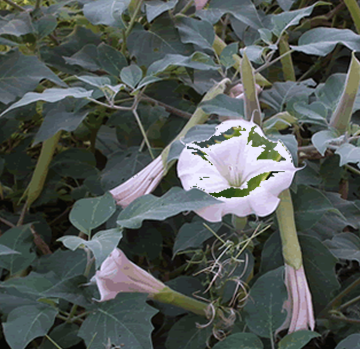
Angel's Trumpet (Brugmansia spp.)
Angel's Trumpet (Brugmansia spp.) is a spectacular plant valued by gardeners, but ingestion of the seeds can be fatal. All parts of the plant contain tropane alkaloids including atropine and scopalamine. Symptoms of exposure include pupil dilation, hypertension, tachycardia, delirium. Symptoms can occur even without ingesting the plant, just handling the plant in the course of routine care can sometimes cause problems for both pets and people. If you suspect your pet has ingested any part of the plant, contact your veterinarian immediately.

Castor bean (Ricinus communis)
The castor bean is very, very toxic...even one seed (the "bean") ingested by a child or pet can be fatal. The seeds contain the toxins ricin and albumin. This common introduced plant has naturalized throughout California and thrives in a variety of habitats. If you think your pet has eaten or chewed on a castor bean, contact your veterinarian immediately. Do not wait for symptoms (commonly vomiting and diarrhea) to appear.
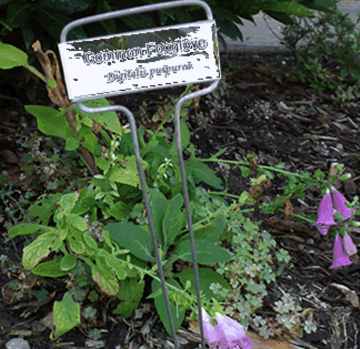
Common Foxglove (Digitalis purpurea)
Common foxglove (Digitalis purpurea), a native of Europe, is naturalized in parts of North America, and grown as an ornamental plant in many gardens. All parts of the plant contain cardiac glycosides and are highly toxic if ingested.
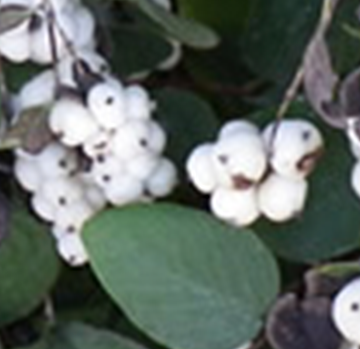
Common Snowberry (Symphoricarpos albus)
Common Snowberry is frequently used as a background landscape plant, and while some wildlife find the berries to be an important food source, it is mildly toxic to humans and pets, containing alkaloids that can cause vomiting, dizziness, and related symptoms.
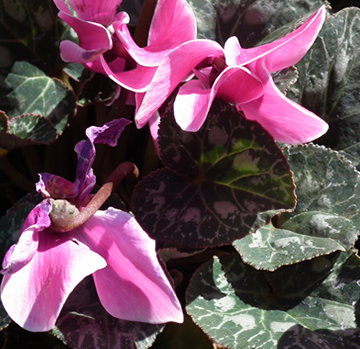
Cyclamen
The beautiful cyclamen is highly toxic to pets who ingest it. The toxins include terpenoid saponins which can cause salivation, vomiting, diarrhea, heart rhythm abnormalities, and even seizures and death. if you think your pet has eaten any part of this plant, contact your veterinarian immediately.
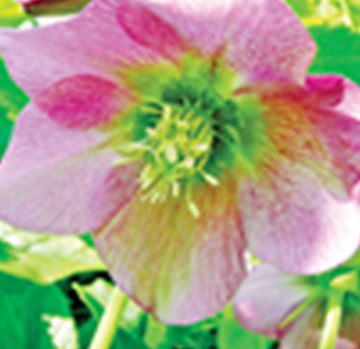
Lenten Rose (Helleborus x hybridus)
The Lenten Rose (Helleborus orientalis) is a winter to spring-blooming perennial that is a lovely addition to the California garden. It is a low-maintenance evergreen plant that thrives even in dry shade, but it is toxic to your pets so don't let them browse on any part of the plant.
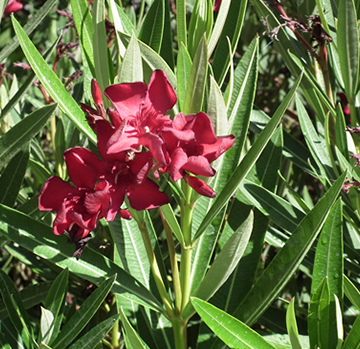
Oleander (Nerium oleander)
Oleander (Nerium oleander) is a common ornamental plant found throughout California in both home gardens and in commercial areas. All parts of the plant contain toxic saponins and cardiac glycosides and are toxic to both animals and people . Even the dried leaves can be very dangerous to livestock which may find them palatable. Ingestion can cause diarrhea and heart arrhythmia. If you suspect your pet has eaten any part of the oleander plant, call your veterinarian right away, don't wait for symptoms to appear.

Sago Palm (Cycas revoluta)
Sago palm (Cycas revoluta) is a member of the cycad family. All cycads are mildly to very toxic so should not be ingested by pets or children. The toxic glycosides and amino acids cause vomiting and liver toxicity. Significant ingestion that is not treated promplty can lead to death.

Winter Daphne (Daphne odora)
Winter Daphne (Daphne odora) is a common ornamental plant whose blooms emit a strong, enticing fragrance that permeates the winter garden. Some varieties have variegated leaves or a silver liniing around each leaf that adds interest to the winter garden. But this plant is toxic so it is best planted in areas not frequented by children or pets. All parts of the plant are toxic, but the berries are most likely to be attractive to pets or children.
